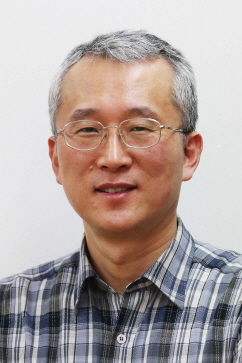people
KAIST announced that it has named Chair Professor Eunjoon Kim of the Department of Biological Sciences as its “Person of the Year 2014.” The award ceremony took place at the auditorium on campus on January 5, 2014.
Established in 2001, the award has been presented to a KAIST faculty member who has made great achievements in research and education, thereby contributing to the advancement of KAIST.
Professor Kim was the first to identify the mechanism of synapse formation between neurons during his post-doctoral program at Harvard Medical School in 1995. The research was published in Nature.
In 2011, Professor Kim discovered that the lack of protein GIT1, a neuronal synapse in the brain, caused ADHD (Attention Deficit Hyperactivity Disorder). He is widely recognized for his work concerning synapse proteins and brain disease related research that set the foundation for future medical developments.
In his award speech, Professor Kim said, “Whenever a research finding concerning a new drug therapy or research is published, I receive many inquiries from the parents of children with ADHD or autism. As a scientist, I would like to focus my research ultimately to help those in pain, rather than just pursuing research excellence or reputation.”

-
research Deep Learning Helps Explore the Structural and Strategic Bases of Autism
Psychiatrists typically diagnose autism spectrum disorders (ASD) by observing a person’s behavior and by leaning on the Diagnostic and Statistical Manual of Mental Disorders (DSM-5), widely considered the “bible” of mental health diagnosis. However, there are substantial differences amongst individuals on the spectrum and a great deal remains unknown by science about the causes of autism, or even what autism is. As a result, an accurate diagnosis of ASD and a prognosis predic
2020-09-23 -
research Genetic Cause of ADHD (Attention Deficit Hyperactivity Disorder) Found
The cooperative research team consisting research teams under Professor Kim Eun Joon and Professor Kang Chang Won of the department of Biological Sciences discovered that ADHD arises from the deficiency of GIT1 protein in the brain’s neural synapses. ADHD (Attention Deficit Hyperactivity Disorder) is found in around 5% of children around the world and is a disorder where the child becomes unable to concentrate, show over the top responses, and display impulsive behavior. The r
2011-04-30 -
research The Irish Times: Gene link identified in ADHD, April 18, 2011
The Irish Times wrote an article on the recent research breakthrough made by a KAIST research team to identify a gene that triggers the syndrome of Attention Deficit Hyperactivity Disorder (ADHD) among children. Given the heightened attention to the syndrome across the world, the research result has received a great deal of attention not only from the academia but also from the media and public. For the article, please visit http://www.irishtimes.com/newspaper/ireland/2011/0418/1224294910305
2011-04-18